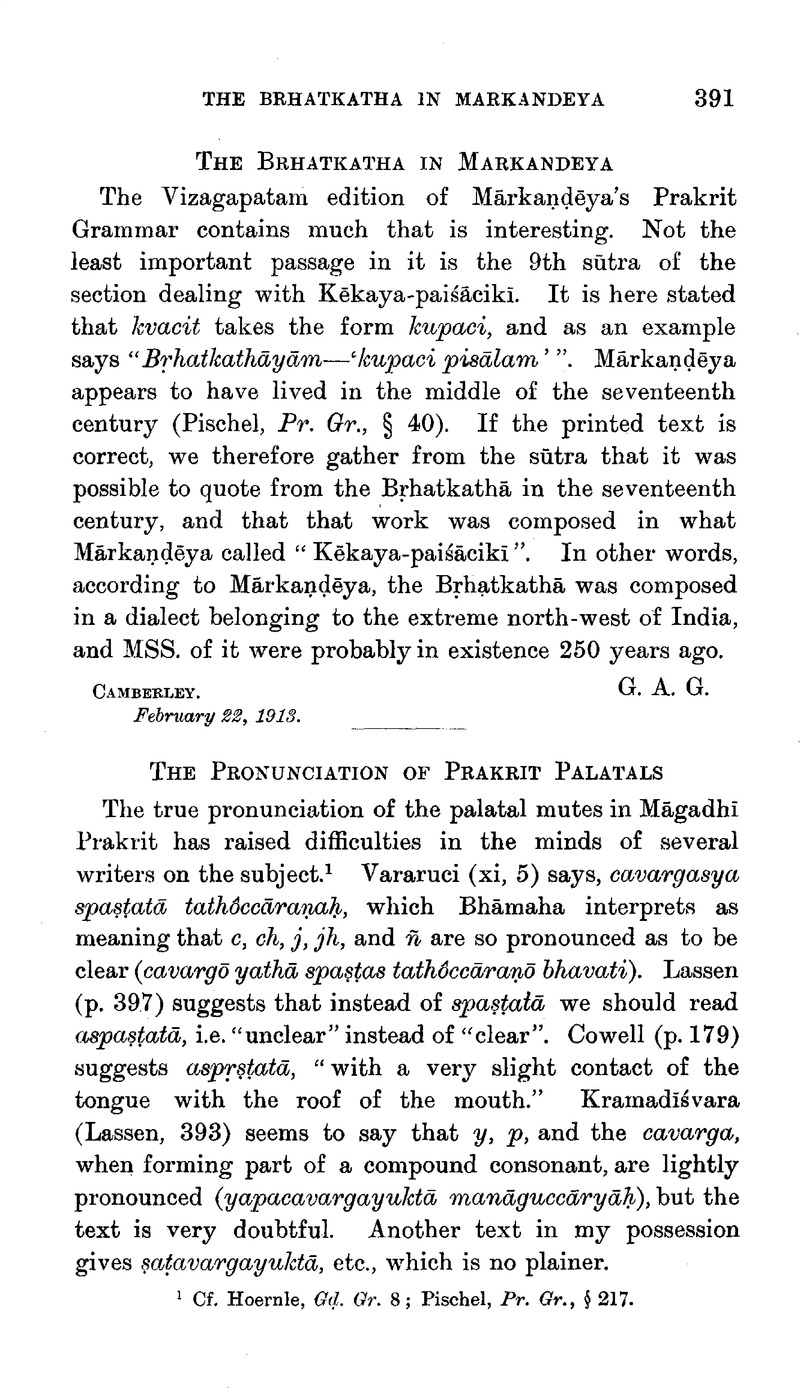No CrossRef data available.
Article contents
The Pronunciation of Prakrit Palatals
Published online by Cambridge University Press: 15 March 2011
Abstract

- Type
- Miscellaneous Communications
- Information
- Copyright
- Copyright © The Royal Asiatic Society 1913
References
page 391 note 1 Cf. Hoernle, , Gḍ. Gr. 8Google Scholar; Pischel, Pr. Gr., § 217.
page 392 note 1 It will be seen here that, while the dialect is based on Kaikēyapaiśācikī, in Śaurasena = paiśācikī, as in Māgadhī Prakrit, the nominative of α-bases ends in ē.
page 392 note 2 First by Hoernle, , Gḍ. Gr. xxxi ff.Google Scholar
page 393 note 1 See Wackernagel, , Altind. Gr. i, 137Google Scholar. Cf. Trumpp, , Sindhī Gr. 14Google Scholar, “The old pronunciation of these letters must have gone through great variations, till they have become the compound sounds of the modern Indian idioms.”
page 394 note 1 In JRAS. 1902, 47, I suggested that this jj might be descended from the Vrācaḍa yj, and this is not inconsistent with the present remarks.


